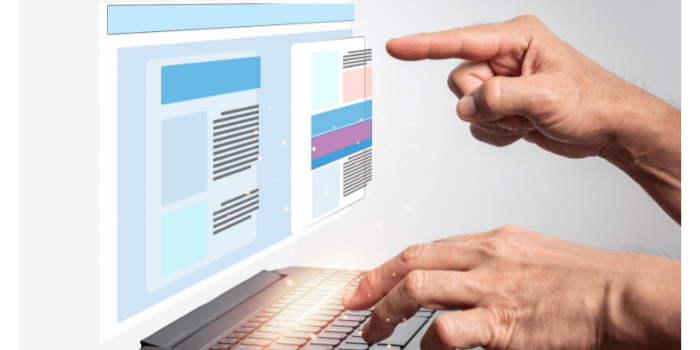Digital transformation is a complete integration of all of your business functions with modern technology. It is not the same as implementing digital software and technologies. Rather, digital transformation is an all-encompassing term to communicate a complete cultural shift in a company; incorporating new business processes rooted in the digital space, and implementing intelligent, data-driven, customer-centric business models.
In 2019, the Prophet.com reports that 28% of CIOs are taking initiative with digital transformation. 51% of these proposals are spurred by the need for businesses to grow.
Every business, especially banks and other financial institutions, are taking heed to the digital disruption happening in banking and the impact it is beginning to have. Competitors are working to get ahead of the curve, which means implementing software is necessary to carry them into the digital era.
Every business wants to stand out from the crowd and demonstrate their competitive advantage. Banks with a digital footprint are outperforming their competition who have not made the transition. With our easy, no-coding necessary platform, our software is the easiest to help your business thrive in the digital age. Virtus Flow can help you digitize and automate your processes in a matter of days rather than months.
Digital Process Automation In Relation To Digital Transformation
Digital Process Automation (DPA) consists of a series of processes and transformations that are occurring under the umbrella of digital transformation. It is the transition from business process automation and implementing digital technologies and software.
Virtus Flow’s digital process automation software is one of the easiest platforms to aid in this transition from analog to digital; improving client-facing and internal processes.
Digitization, Digitalization, And Digital Transformation: What is the Difference?
Virtus Flow wants to educate customers on the various phrases that delineate digital transformation initiatives. That way you can make an informed decision about integration strategies. Our specialists have outlined them below.
Digitization Is The Transition To Digital
Digitization is taking all of your written records — financial documents, customer information, receipts for purchase or selling, any papers you need to run your business — and converting them into digital data.
Sometimes this is as simple as scanning papers using a machine, while other times the information needs to be manually inputted. The data is then accessible under a single system, for employees to use. Other methods are more complicated, such as manually typing information into an online database.
If you are concerned about confidentiality, customer and business data can be encrypted and stored within secure digital clouds. Customers will find it easier to access their information online. You will build trust by taking care of their data, products, and services.
Digitalization Is How You Use Digital Data
Digitalization refers to the processes and technologies utilized to leverage big data. You make the information work for your business to turn a profit or increase conversion rates. The trick is to specify your goals using metrics and rates.
There is no one perfect technology that works for all businesses. Intelligent automation, for example, is one type of process that a business can use. As each institution’s needs are different, various processes and methods are required.
Choosing a process without planning how to implement it will lead to inefficient processes, confusion from employees, and wasted time. That makes your digital data useless as well. When you want to leverage data, you need to know the desired end results and how to make the information work for you.
Managers need to identify online platforms, clouds, and servers that allow them to operate with higher productivity and flexibility. Consider how clouds can store data and restore it in the case of crashes. They also provide means by which businesses can use it to improve the user experience. The right cloud can provide a reliable infrastructure for a bank so that their customers can access data easily.
Digital Transformation Is A Movement
Digital transformation takes the aspects of digitization and digitalization and merges them under a single goal. This goal is to create business transformations and increase value through each transaction. Many goals and directives come together within a single business strategy.
These strategies can include increasing efficiency, handling risks and returns with ease, or finding new opportunities for monetization. The end result is that a business sees improvement in its operations. You simply need tangible results.
One important aspect is improving the customer experience. This applies whether they are users for your website or the clients that will consult you about financial matters. You want to ensure that the integration of new technologies will increase accessibility and convenience.
Another is changing your workplace culture so that every employee will use the new technology and will be trained accordingly. Consider, for example, that cloud computing will become a higher priority for data security. Employees need to know how to leverage cloud services to reduce business costs and increase the speed of transactions and other operations.
Workplace culture will also determine how to assist employees that may be slow to adopt new technology. This is a perfectly natural phenomenon that you would rather minimize. Managers will boost morale for employees and incentivize them to train with new technologies, to ensure that the transition goes smoothly.
In addition, innovations can change a business’s hierarchy. Job titles can change, and as a result, that can lead to disruptions within the business. Disruptions are great in that they force an industry to adapt to new customer needs and expectations. The drawback is that they can reduce morale within the workplace and cause concerns about job security.
In short, you need a digital transformation strategy to improve your business’s technology system. Managers need to educate how people — employees and customers alike — will use them.
How To Get Started With Digital Transformation
The first step is to get every manager, owner, and executive to agree about implementing the new technologies. As mentioned, digital transformation leads to disruptions and not every manager will see the long-term benefits. They need to be educated and handle the changes with their teams.
When you want to create synergy, every person on the business hierarchy needs to know the steps to ease the transition for their employees. That way leaders can maintain morale, schedule training sessions, and measure results using tangible metrics.
Once everyone has agreed about the transformation, the second step is to develop a full-fledged strategy for implementation. One common mistake that businesses make is to adopt a new cloud or artificial intelligence immediately. Their managers fail to define specific goals they want to accomplish by using them in their operations.
In an ideal world, your managers will know how to plan for the long-term. They need to have plans and specific results in mind, and flexibility. This will instruct employees on what to do when the new adjustments don’t show immediate benefits.
The third step is to prepare employees for the changes to their work structures. As mentioned, training sessions are one way to ease the transition, while managers can maintain morale. Even so, everyone needs to be educated and informed about potential disruptions. This will not only maintain productivity but also cumulatively increase the competitive advantage within your institution.
Improve Your Processes With Virtus Flow
Virtus Flow will usher your business through digital transformation in as soon as a few days. You will save time when implementing our intelligent automation and digital workflows. No coding is required.




